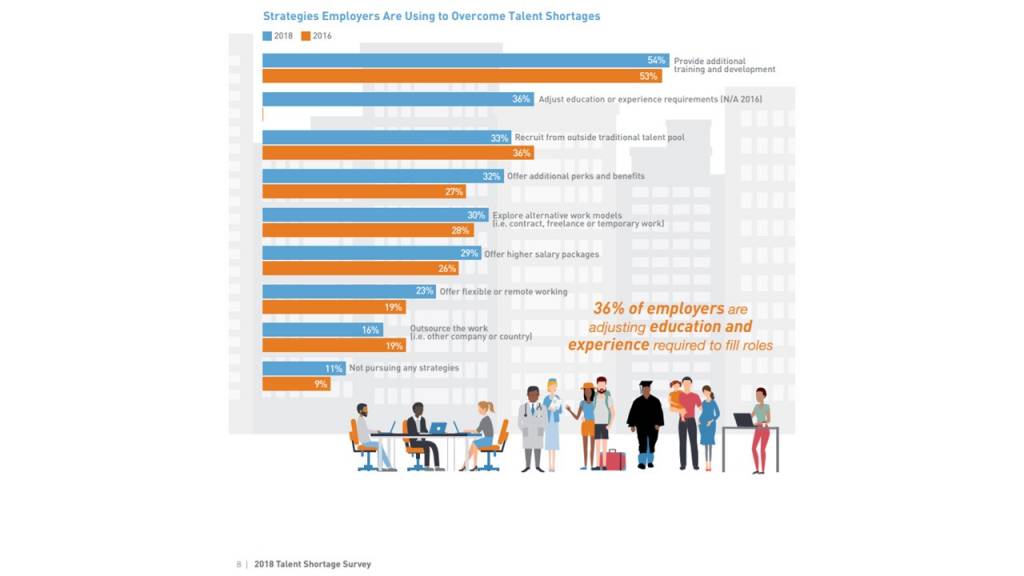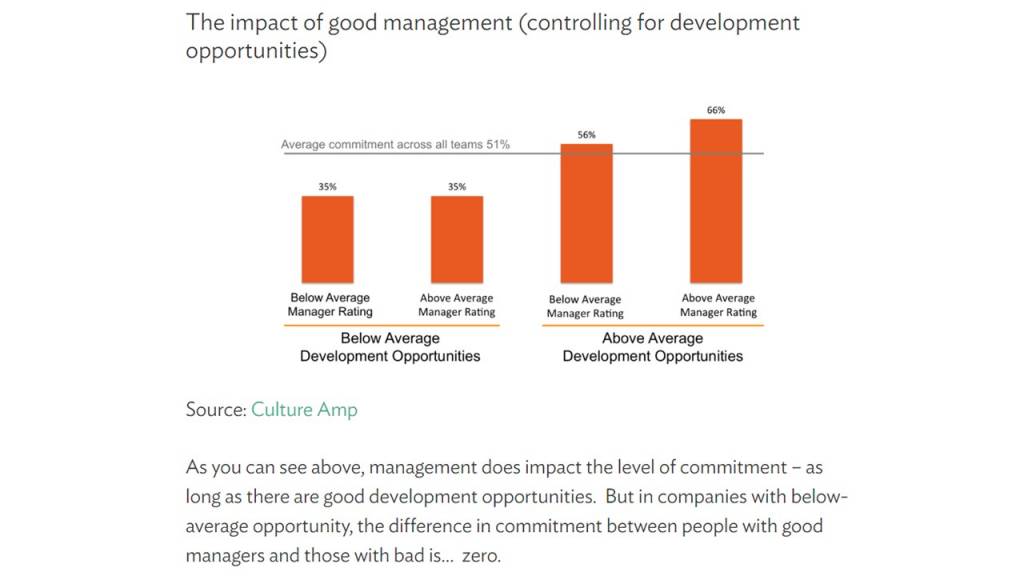“With record talent shortages around the world, it’s no longer a question of simply finding talent; we need to build it,” Manpower say. “New assessments, big data and predictive performance mean employers have the best tools to identify adjacent skills, help people shift into emerging roles and create clear career paths. We know talent shortages are not going to fix themselves. Organizations need to accelerate efforts to upskill and reskill employees for the new world of work so companies succeed and people have employment security for the long term.” – Solving the Talent Shortage – Manpower Group
If you are a manager or work in Human Resources, the talent shortage is no surprise. Sitting with the executive exchange CEO groups, I facilitate the lack of talented people. When they show up, how to keep them is a continuing discussion – that often leads to no clear answers. Below is a chart from the research on some strategies companies are using.

How to make progress on your talent shortage
Providing additional training and development is at the top of the list …. which in my opinion, is excellent – I am biased. However, there is supporting evidence to show that development opportunities can be more potent than management. The possibilities for developing talents or making progress on meaningful work keep top talent within the organization.
See this from Culture Amp – “management does impact the level of commitment – as long as there are good development opportunities. But in companies with below-average opportunity, the difference in commitment between people with good managers and those with bad is… zero.”

Build, Buy, Borrow, Bridge
Perhaps the best piece from the talent shortage report returns to the tried and true organization development processes to attract, keep and retain talented people:
- Build – invest in learning and development to grow your talent pipeline. Identifying future potential, driving a culture of learnability through the organization, and providing accelerated training programs will be critical to success in the digital age.
- Buy – Go to the external market to find the best talent that cannot be built in-house in the timeframe required. “Employers need to understand that candidates are consumers too; to attract and engage the best and brightest, HR must be a master marketer.”
- Borrow – Cultivate communities of talent outside the organization, including part-time, freelance, contract, and temporary workers to complement existing skills. “Organizations must learn to cultivate communities of workers inside and outside the company. They need to explore total talent management solutions, be systems thinkers and better marketers, and tap talent in whatever form it’s available.”
- Bridge – Help people move on and move up to new roles inside or outside the organization. “Leaders have a critical job of optimizing their skills and finding alternative pathways so those whose skills no longer fit can bridge to changing or emerging roles.”
When you invest in developing your organization, team, and leaders, the economic return is that the right people stay and continue to get better while supporting your progress. Also, when good people have an organization that encourages development, people discover more innovative ways of improving the work and developing new ways to grow the company. If you are having a tough time finding talented staff, invest in the ones you have, and you will see improvements …. it just takes some time.

